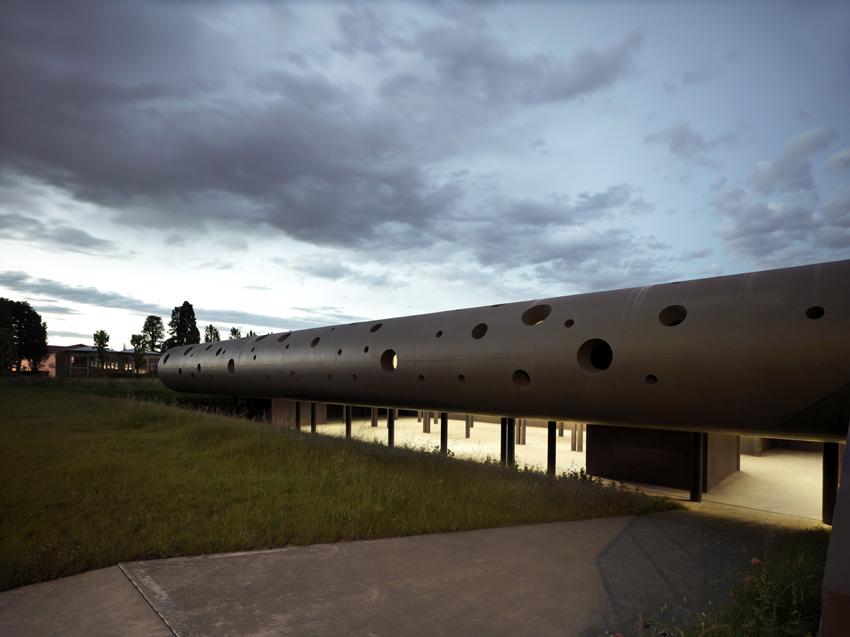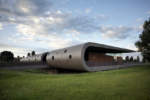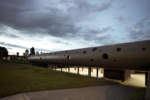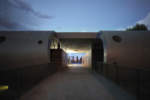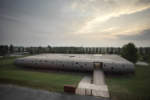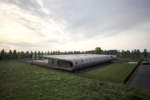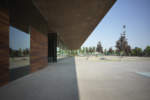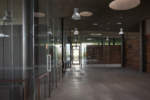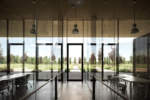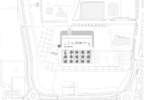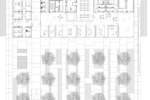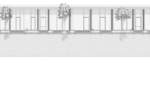architect: Archea Associati
location: Seregno, Italia
year: 2012
Without walls, floors or ceiling.
Architecture in a gesture.
Roll, crease, fold, accumulate, curve, shorten, bend, twist, stain, pucker, shave, tear, splinter, split, cut, select, drop… all these transitive verbs were included in the list of terms which Richard Serra, American artist, wrote down in a notebook between 1967 and 1968, indicating special and precise operations on unspecified materials. Those actions, which marked an irreversible revolution in the field of the plastic arts, have almost forty years later become compositive instruments of common use, available to architects.
Indeed, AutoCad menus do not merely include graphic operations that serve to represent an architecture, but others that represent true design operations: diving, swooping, zooming, slicing, folding, shifting, are – just to mention a few – some of the words used to identify the origin of such new composition methods in the field of architecture and landscape design.
The design of the Center for Disability in Seregno, realized by Archea Associati, is inspired by this gestural approach to architectural materials, which makes it possible to meet the functional requirements of the new building in a direct manner, with minimal structure. It is a matter of a facility for otherwise abled persons, where educational and recreational activities are conducted and where every kind of limit and barrier between architecture and landscape, interior and exterior, horizontal and vertical surfaces has – as far as possible - been eliminated.
There is no true threshold between interior and exterior: the building is projected into the greenery, and even those confined to wheelchairs can enjoy the shade of the trees which literally burst forth from large openings in the floor slab.
The characteristic elements of the building share an analogous fate: the windows are replaced by cylinder-shaped openings crossing the concrete sheet, the entrance door takes the form of a footbridge which seems to be cut out from the same curved concrete layer, and the corridors are merely the empty space remaining between the volumes in wood and glass containing the rooms, classrooms and facilities of the centre.


